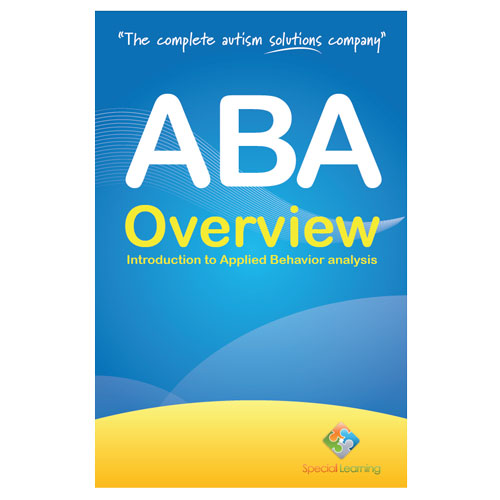Treatment Approaches
There are various treatment approaches for children with autism. These approaches are not able to cure the autism spectrum disorder in your child; however, these treatments will help your child learn and develop as he or she grows.
The treatment approaches most often used with autistic children are:
Applied Behavioral Analysis (ABA)
Applied Behavioral Analysis (ABA) therapy is a treatment approach that helps in understanding how the environment can affect behavior and how a child’s behavior can affect his or her environment. It uses various techniques such as positive reinforcement, in which behavior leads to a valued reward as a reinforcer or incentive to encourage repetition of that behavior. ABA therapy uses techniques and rules to deal with socially important issues and to develop significant changes in a child’s behavior.
With Applied Behavioral Analysis, children with autism have been able to make significant developments in many areas. These skills may take a long time to be learned, but with carefully organized instructions and practice, children will eventually develop better skills. ABA therapy concentrates on the individual characteristics and needs of the child being treated; therefore the goals of ABA therapy may be different from one child to another. It depends on the age, functioning ability, interests of the child, requirements of the family, and so on. Some children may quickly learn a particular skill such as interaction with others, but take a lot of time to learn another, such as reading.
DIR Model or Floortime
Floortime is a therapy based on the Developmental Individual Difference Relationship Model (DIR). In Floortime, a therapist or an adult helps a child in developing communication by getting involved in the child’s play activities on the floor. This form of therapy helps the child to achieve six important milestones of intellectual and emotional development:
● Self-regulation and building interest in the world
● Intimacy and bonding with human relations
● Two-party communication
● Complex communication
● Conceiving emotions
● Understanding logic
Miller Method
The Miller Method is an approach of treatment for children with autism that is developed by Dr. Arnold Miller, Ph.D., and Eileen Eller-Miller, M.A. This approach is built upon the theory of cognitive development systems. According to the Miller Method, a child’s ability to build systems and organize behavior leads to the child’s development. However, a child with autism lacks this ability. The Miller Method makes use of two important processes that help in restoring the advancement of the child’s normal development:
● Changing a child’s aberrant behaviors, like a response to stimuli, into functional behaviors.
● Consistently introducing relevant activities for development that involve people and objects. This helps the child in developing body awareness and communication skills using language and gestures. The child needs to be under close observation during this program and parental participation is considered necessary.
Relationship Development Intervention (RDI)
Relationship Development Intervention (RDI) is a treatment approach that involves behavioral development through the technique of positive reinforcement. It helps in improving the child’s social skills, self-awareness and adaptability. There are six goals of RDI:
● To help the child build an ability to use emotional responses that will help them learn from other people’s subjective experiences.
● To develop the child’s observation ability and the ability to regulate behavior while exchanging emotions in social coordination and building spontaneous relationships.
● To help the child in learning to use language and gestures to communicate and express questions, to interact and share emotions.
● To develop the ability of the child to be able to think flexibly and adapt to changing circumstances.
● To help the child in understanding relational information based on context.
● To develop the child’s ability to think about past experiences that will help in anticipating possible future circumstances in a positive way.
Son-Rise
The Son-Rise program was started by Barry Neil Kaufman and Samahria Lyte Kaufman after their son was diagnosed with autism. This treatment approach is based on child-parent participation. Parents join the child while he or she is engaged in repetitive behavior. The child slowly starts to interact with the parents. Then the parents start involving the child in games and activities according to the child’s interests. This helps in building the child’s interaction and relational ability.
The main concentration of this approach is on the parent’s attitude and emotions which help them bond with their child. Parents are taught how to make a distraction-free learning environment for the child. The child should feel secure and in control of the environment. The Son-Rise therapy is based on:
● Eye contact
● Flexibility
● Communication using language
● Communication using gestures
● Interactive attention span
Treatment and Education of Autistic and Communication related handicapped Children (TEACCH) Program
TEACCH is an education program based on the intervention approach known as Structured Teaching. It entails the relative strengths and difficulties of autism-affected people that determine their learning abilities.
The child is analyzed to find out what his or her skills are. Then the program concentrates on enhancing these skills. A personalized plan is made for each student in which a highly organized environment is created to help the individual student arrange activities. Visualization is used to organize the social and physical environment. This enables the child to understand and anticipate everyday activities and respond appropriately. The TEACCH programs are mostly conducted in classrooms; however, home-based programs are also available.
References:
Copyright © by Special Learning Inc. All right reserved.
No part of this article may be reproduced in any manner whatsoever without written permission except in the case of brief quotations embodied in critical articles and reviews. For information, contact Special Learning Inc., at: contact@special-learning.com








